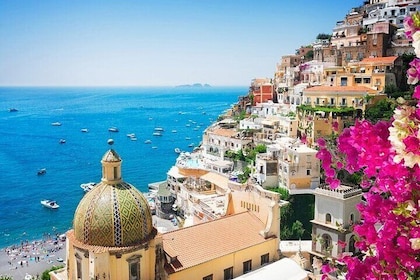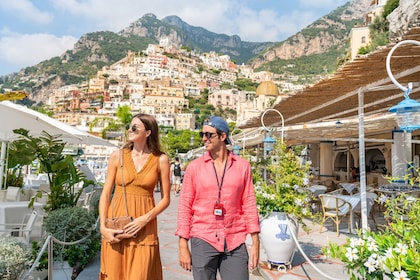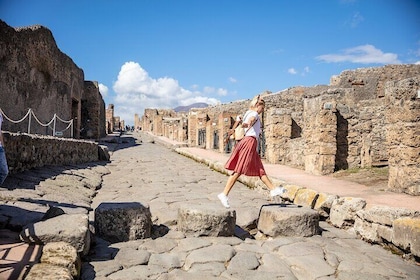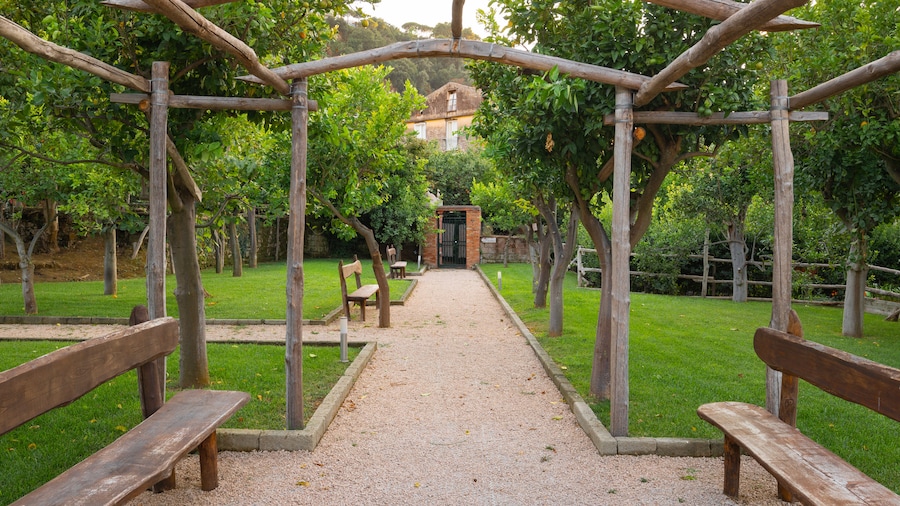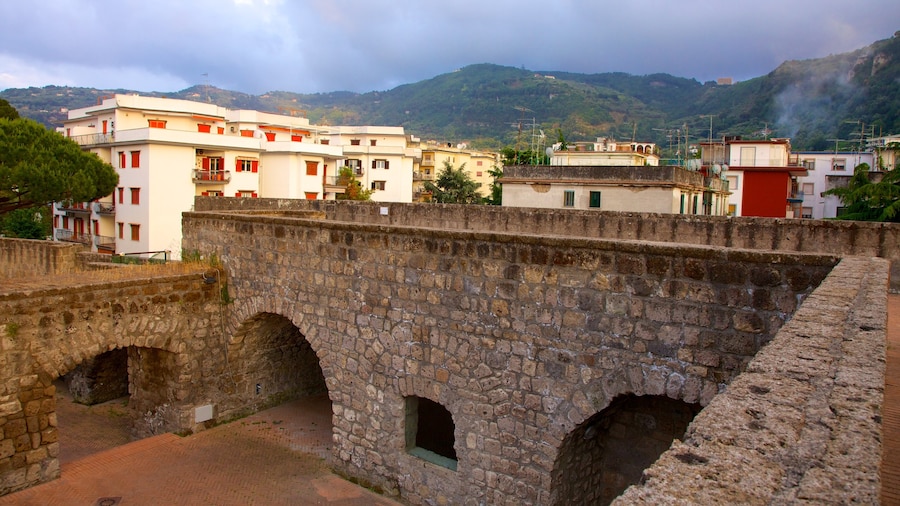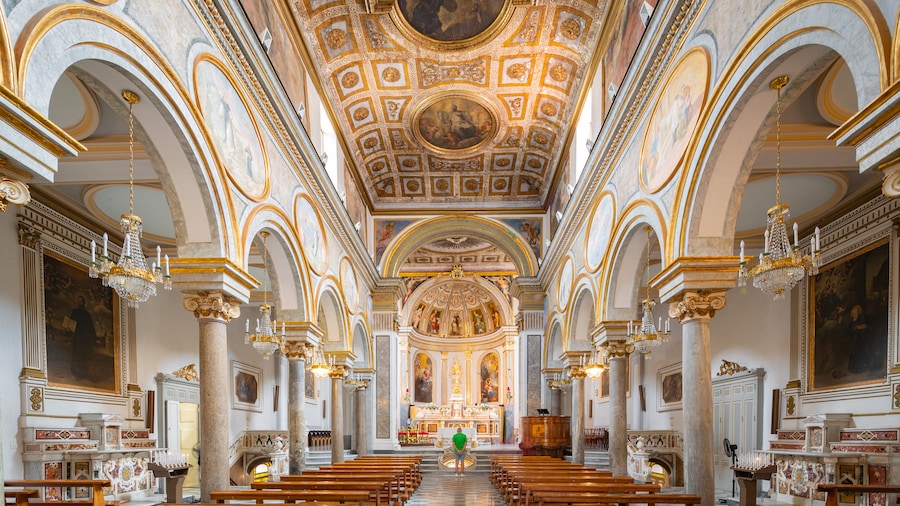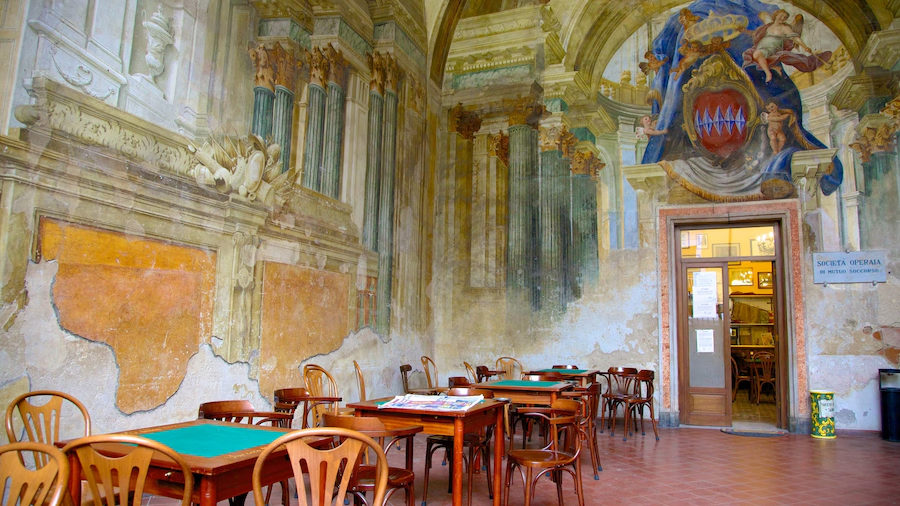Decorative chapels and a dazzling collection of frescoes by notable Italian artists beautify the interior of this 15th-century religious monument.
Sorrento Cathedral (Cattedrale di Sorrento) is the main place of worship in the city of Sorrento. The building’s modest exterior conceals a grand interior festooned with magnificent archways, altars, chapels and paintings. A cathedral has existed in the city since around the 11th century. Note that today’s Sorrento Cathedral, a restoration of a 15th-century Romanesque building, was heavily damaged during an invasion by the Turks in 1558.
Pass through the solid wooden doors of the white-marble façade to discover a dazzling display of religious artwork. In the vestibule, inlaid panels portray important events related to the cathedral’s history such as the arrival of St. Peter in A.D. 43 and the visit of Pope Pius IX in 1849.
The cathedral has a wide nave with two rows of grand pillars and arches creating three sections. Paintings by Francesco Francareccio and the Baroque artist Nicola Malinconico adorn the ceilings. The Malinconico works represent the earliest Sorrento martyrs and patron saints of the city. Gaze up to the ceiling of the presbytery for depictions of the Assumption of Mary, St. James and St. Philip created by Giacomo del Po.
Multiple chapels showcase more artistic flair, including bas-reliefs, figurines and marble altars. In one, look for marble relics from a 10th-century church. Spot carvings of the coats of arms of Pope Sixtus IV and King Ferdinand I of Naples. Also noteworthy are the medieval marble block emblazoned with an open-mouthed lion and a font used for the baptism of Italian poet Torquato Tasso.
Located in the center of Sorrento City, the cathedral is one of the major landmarks of the city’s historic quarter. Sorrento’s train station is a 10-minute walk east. Close to the cathedral, visit the Sedile Dominova. This elegant frescoed mansion was once a meeting place for the town council and noblemen.
Sorrento Cathedral is open daily and admission is free. It is an active church and offers Mass services regularly. Join local parishioners for a service or simply wander through to view the art.





